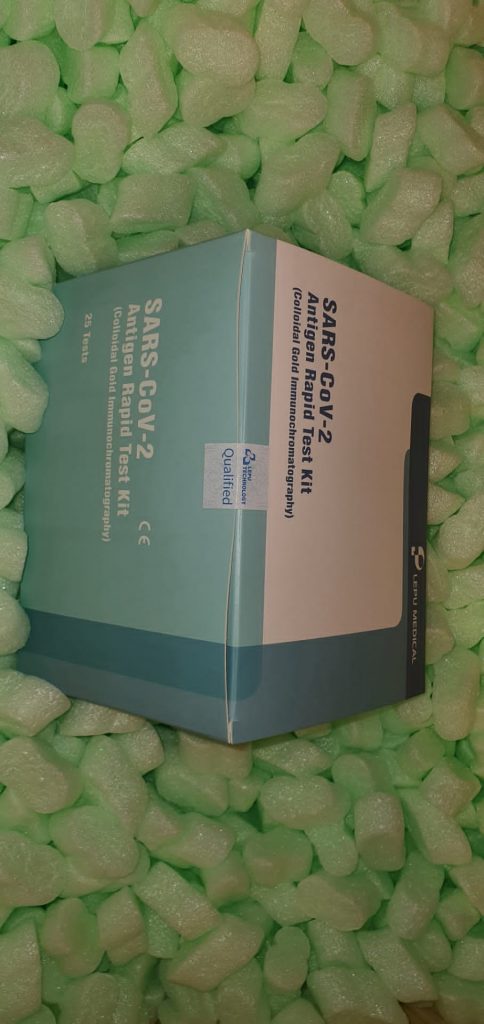Acute myocardial infarction (AMI) has changing into a standard main explanation for sudden dying worldwide. MiR-96 has been recognized that may goal anti-apoptotic associated genes in numerous human illnesses. However, its position in AMI stays unclear. In this examine, we discovered that miR-96 was considerably upregulated within the ischemic coronary heart of MI mice (mice with myocardial infarction) and likewise within the H2O2-treated neonatal rat ventricular cardiomyocytes (CMs). In response H2O2, miR-96 inhibitor might considerably promote cell viability and scale back cell apoptosis of CMs, and inhibit the expression of Cleaved caspase-Three and Bax, whereas promote Bcl-2 expression.
In addition, downregulation of miR-96 remarkedly decreased the infarct measurement and the odds of apoptotic cells within the coronary heart tissues of MI mice, after which protected towards the broken cardiac operate. Moreover, we recognized that XIAP (X-linked inhibitor of apoptosis) acted as a direct goal gene of miR-96, in the meantime si-XIAP might clearly reverse miR-96 inhibitor induced protecting impact in H2O2-treated CMs Taken collectively, our examine demonstrated that miR-96 promoted AMI development by instantly targeting XIAP, and inhibiting the anti-apoptotic operate of XIAP (Graphical summary), which offered a novel therapeutic goal for AMI therapy.
Deoxynivalenol (DON) is taken into account a mycotoxin that’s poisonous to the agricultural atmosphere and human physique. It is important to review the pathophysiological mechanism of DON toxicity on the mobile stage. Cytochrome c (Cyt c), as an necessary biomarker of DON-induced apoptosis that will result in a bipartite ‘point-of-no return’ occasion, is of nice significance to be detected utilizing cell imaging. Herein, we synthesized a DON-deactivated emission fluorescent probe, the molecularly imprinted polymer-coated quantum dots (CdTe@MIP), for monitoring the Cyt c stage with a photoinduced electron switch technique.
The CdTe@MIP probe may be simply loaded into cells and carry out nicely on account of its nice sensitivity and selectivity and its fluorescence was step by step quenched with the growing focus (0-10 μM) and incubation time (0-7.5 h) of DON. Cell imaging outcomes of apoptosis induced by DON was per that of the cell counting kit-Eight assay and movement cytometry method. The developed technique can be utilized to observe DON-induced apoptosis and supply an early-warning system for the contaminant toxicity.
Tanshinone IIA mixed with CsA inhibit myocardial cell apoptosis induced by renal ischemia-reperfusion harm in overweight rats
Acute myocardial harm (AMI), which is induced by renal ischemia-reperfusion (IR), is a major explanation for acute kidney harm (AKI)-related related dying. Obesity will increase the severity and frequency of AMI and AKI. Tanshinone IIA (TIIA) mixed with cyclosporine A (CsA) pretreatment was used to alleviate myocardial cell apoptosis induced by renal IR, and to find out whether or not TIIA mixed with CsA would attenuate myocardial cell apoptosis by modulating mitochondrial operate by means of the PI3K/Akt/Bad pathway in overweight rats.
Male charges have been fed a excessive fats weight loss plan for Eight weeks to generate weight problems. AKI was induced by 30 min of kidney ischemia adopted 24 h of reperfusion. Obese rats got TIIA (10 mg/kg·d) for two weeks and CsA (5 mg/kg) 30 min earlier than renal IR. After 24 h of reperfusion, the rats have been anaesthetized, the blood have been fetched from the belly aorta and kidney have been fetched from belly cavity, then associated indicators have been examined. At the identical time, TIIA mixed with CsA improved mitochondrial operate.
TIIA mixed with CsA can alleviate the pathohistological harm and apoptosis induced by renal IR in myocardial cells. TIIA mixed with CsA improved cardiac operate after renal ischemia (30 min)-reperfusion (24 h) in overweight rats. Abnormal operate of mitochondria was supported by decreases in respiration controlling fee (RCR), intracellular adenosine triphosphate (ATP), oxygen consumption fee, and mitochondrial membrane potential (MMP), and will increase in mitochondrial reactive oxygen species (ROS), opening of the mitochondrial permeability transition pore (mPTP), mitochondrial DNA injury, and mitochondrial respiratory chain complicated enzymes.
We used remoted mitochondria from rat myocardial tissues to reveal that myocardial mitochondrial dysfunction occurred together with renal IR to induce myocardial cell apoptosis; weight problems aggravated apoptosis. TIIA mixed with CsA attenuated myocardial cell apoptosis by modulating mitochondrial operate by means of the PI3K/Akt/Bad pathway in overweight rats. The harm of mitochondrial dynamic operate was assessed by lower in dynamin-related protein 1 (Drp1), and will increase in mitofusin1/2 (Mfn1/2), and mitochondrial biogenesis harm was assessed by decreases in PPARγ coactivator-1-α (PGC-1), nucleo respiratory factor1 (Nrf1), and transcription issue A of mitochondrial (TFam).

Protective mechanism of kaempferol towards Aβ 25-35-mediated apoptosis of pheochromocytoma (PC-12) cells by means of the ER/ERK/MAPK signalling pathway
Progressive accumulation of amyloid-β (Aβ) is a pathological trait of Alzheimer’s illness (AD). Amyloid-β will increase free radical manufacturing in neuronal cells, resulting in neuronal cell dying. Hormone alternative remedy can scale back the incidence of AD, and oestrogen considerably improves the medical indicators in sufferers with AD. However, the long-term use of oestrogen causes quite a lot of illnesses. Phytoestrogens have been reported to bind and activate oestrogen receptors in mammals and people to supply oestrogen-like or anti-oestrogen-like results.
This examine used pheochromocytoma (PC-12) cells that have been broken by Aβ25-35 as an in vitro mannequin of AD, and oestradiol was a constructive management. The cells have been incubated with kaempferol alone or together with fulvestrant (an antagonist of ER) and U0126 (an inhibitor of ERK) in Aβ25-35 tradition. Cell exercise was measured by the MTT technique. Cell apoptosis was evaluated by movement cytometry. Gene and protein expression ranges have been examined by qRT-PCR and Western blotting.
[Linking template=”default” type=”products” search=”Anti- Factor Related Apoptosis Antibody” header=”2″ limit=”142″ start=”2″ showCatalogNumber=”true” showSize=”true” showSupplier=”true” showPrice=”true” showDescription=”true” showAdditionalInformation=”true” showImage=”true” showSchemaMarkup=”true” imageWidth=”” imageHeight=””]
This examine demonstrated that kaempferol protected PC-12 cells from Aβ25-35-induced cell dying and apoptosis in a dose-dependent method. Treatment with fulvestrant (an antagonist of ER) and U0126 (an inhibitor of ERK) considerably elevated the apoptosis of PC-12 cells. Moreover, kaempferol promoted the expression of anti-apoptotic molecules and inhibited the expression of pro-apoptotic molecules, which have been blocked by fulvestrant and U0126. Kaempferol is a flavonoid phytoestrogen that may produce a sure protecting impact in neurons. However, the molecular mechanism of kaempferol in AD is unclear.

